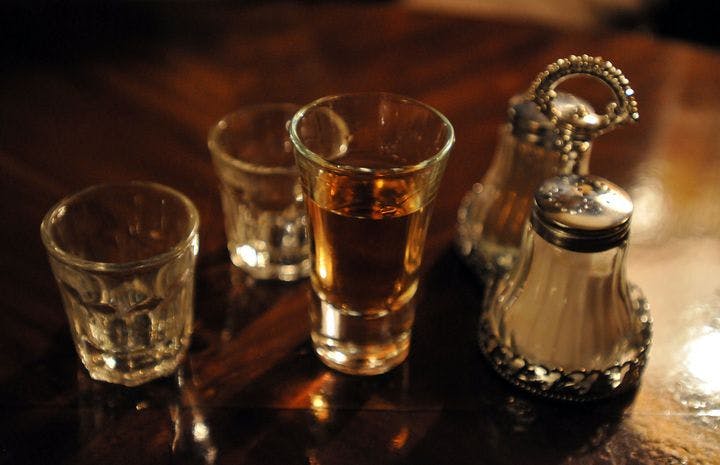Fall 2011
Russia's widespread alcoholism is not a joke
– The Wilson Quarterly
The life expectancy of a Russian male born this year is just 60 years. Alcohol is a major reason why.
Few cultures are strangers to the perils of the bottle. However, “there is a specific eeriness about the problem in Russia,” writes Heidi Brown, who formerly reported on the country for Forbes. There, alcoholism is “widespread, it is socially accepted, and it has transcended regimes—from the tsars, to the communists, to today’s hybrid mix of democracy and authoritarianism.” The life expectancy of a Russian male born this year is just 60 years, nearly 20 years less than that of his Italian and French counterparts, and his death may well come from alcohol poisoning or a drink-related accident, suicide, or heart attack. Overall, alcohol contributes to 500,000 Russian deaths a year. Fetal alcohol syndrome, which causes marked physical and neurological impairments, is epidemic; a 2006 Tufts University study found that more than half of the children in one Russian city’s orphanages suffered from the disorder.
The government’s response has been weak—raising the tax on liquor and restricting advertising—for a reason, Brown argues. Traditionally, the Russian state has nursed its own booze addiction. In tsarist times, levies on spirits accounted for nearly half of the government’s tax revenues, and during the Soviet era, 30 percent.
Vodka, a liquor distilled from rye, wheat, or other plant pulp high in starch or sugar, has been winter-chilled Russians’ nip of choice for the past thousand years; unlike beer or wine, it won’t freeze. If it has raked in state revenue, it has also been a handy tool for bringing the populace to heel. In the 18th century, Peter the Great encouraged drinking, then allowed indebted boozers to avoid prison by serving in the military—for enlistments of 25 years. Landowners paid their serfs in the clear spirit, and “during World War II, Stalin ordered his generals to give their soldiers a daily portion of vodka . . .‘100 grams for courage,’ ” Brown notes. “This helped numb the malnourished, underequipped, and terrified young men.”
A few leaders, including Vladimir Lenin and Mikhail Gorbachev, have tried to curb alcoholism, but coercive approaches that don’t focus on treatment haven’t done much good, or haven’t stuck. Raising the liquor tax means that destitute alcoholics will turn to moonshine (often made from sawdust), even antifreeze, for a fix. The standard Russian treatment, based on “narcology,” is not effective, either. It relies on “harsh medicines and temporary palliatives,” as well as hypnosis, and the state-appointed chief narcologist of Russia seems to have a shaky grasp of alcoholism’s menace, advising drinkers to “get up, walk around, and open windows to keep from getting too inebriated”—hardly a proven method of conquering addiction.
The biggest problem with narcology is that, like the authoritarian state, it puts power into the hands of a few—in this case, doctors. Programs such as Alcoholics Anonymous, in which patients take charge of their own recovery, are rare. With an estimated 25 percent success rate for those two years out of treatment, however, AA is making inroads in the land of vodka, where roughly 7,000 Russian members are struggling to stay on the wagon whether or not their government follows.
THE SOURCE: “Drinking Games: Can Russia Admit It Has a Problem?” by Heidi Brown, in World Policy Journal, Summer 2011.
Photo courtesy of Flickr/Peter Morgan
